Blog post by: Eye Physicians of Long Beach

Poor vision can be frustrating. Different vision correction procedures can help you experience life without glasses or contacts.
Whether you’re nearsighted, farsighted, or have astigmatism, a laser vision correction procedure can permanently fix your refractive error, leaving you with clear vision without relying on visual aids to see.
Keep reading to learn more about the laser vision correction procedures available at Eye Physicians of Long Beach that can help you no longer depend on glasses or contacts.
LASIK
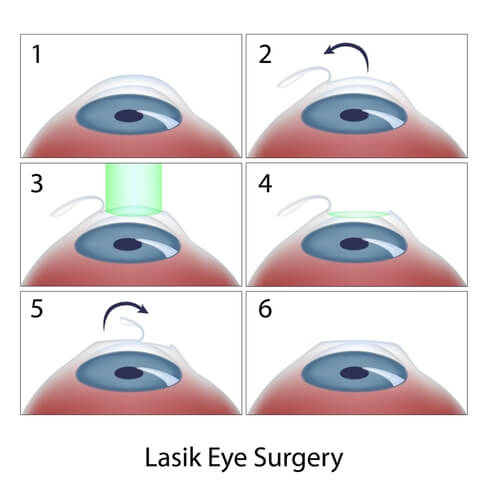
LASIK is a popular vision correction procedure that addresses nearsightedness, farsightedness, and astigmatism. Your surgeon uses a laser during the outpatient procedure to make a tiny hinged flap in your cornea.
They then fold the flap back to gain access to the layers below. Next, they will reshape the corneal tissue to correct your refractive error.
Once done, the flap is returned to its normal position and left to heal. The flap acts like a natural bandage and protects your eyes as you recover.
Who is a Good LASIK Candidate?
You may be a good candidate for LASIK if you meet the following criteria:

- You are 18 or older
- Your corneas are thick enough
- You do not have dry eye syndrome
- You are not currently pregnant or nursing
- You’ve had a stable prescription for at least a year
- You do not have a history of or any existing corneal disease
- You don’t have any severe eye problems like keratoconus, macular degeneration, diabetic retinopathy, or glaucoma
LASIK has excellent outcomes, with a 96 percent patient satisfaction rate. More than 90 percent of patients achieve 20/20 vision or better, and 99 percent attain better than 20/40 vision.
If you don’t qualify for LASIK, there are alternative procedures that are equally as effective and include the following:
EVO Visian ICL
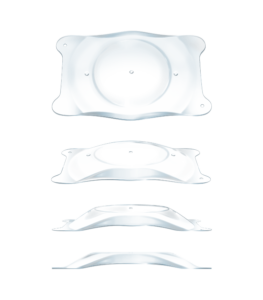
The EVO Visian ICL is a biocompatible Implantable Collamer Lens (ICL), also called an Implantable Contact Lens. It corrects nearsightedness with or without astigmatism and works in harmony with your eye.
Patients have the EVO Visian ICL implanted in front of their natural lens during a brief, same-day procedure. Unlike LASIK, the EVO Visian ICL does not require removing tissue from the cornea.
The EVO Visian ICL has a success rate of 99 percent. It delivers permanent sharp, high-definition vision and excellent night vision.
It also offers protection against damaging UV rays. Unlike other vision correction procedures, the EVO Visian ICL is reversible, meaning patients can have it removed at any time.
Who is a Good EVO Visian ICL Candidate?
You might be an ideal candidate for EVO if you:
- Are between 21 and 45 years of age
- Are not currently pregnant or nursing
- Don’t have uncontrolled blepharitis or dry eye
- Have maintained a stable prescription for at least one year
PRK
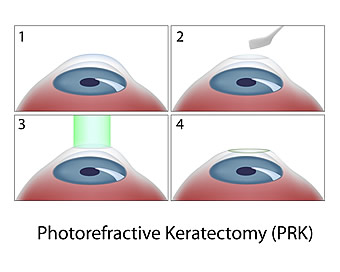
PRK is a laser eye procedure that addresses refractive errors like nearsightedness, astigmatism, and farsightedness. The procedure can be a great alternative to LASIK if you have thin corneas, chronic dry eyes, or play contact sports.
During PRK, your surgeon removes the epithelium or thin outer layer of your cornea. The underlying corneal tissue is then permanently reshaped with a laser.
After removing the epithelium, your surgeon places a contact lens over your eye to offer protection. A new epithelial layer grows back in about five days.
PRK has similar outcomes to LASIK, with a success rate of approximately 95 percent. Nearly 70 percent of PRK patients achieve up to 20/20 vision, with 92 percent attaining 20/40 or better after correcting their vision.
Who is a Good PRK Candidate?
You may qualify for PRK if you:
- Are at least 21 years old
- Have maintained a stable prescription for a year
- Are not currently pregnant or nursing
- Don’t have serious eye conditions like keratoconus
LASEK
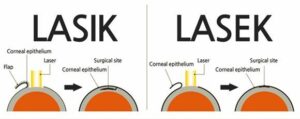
LASEK is a procedure used to treat farsightedness, nearsightedness, and astigmatism. It combines the benefits of LASIK and PRK.
Like in PRK, the uppermost layer of the cornea or epithelium is loosened and separated from the underlying tissue. This, however, is done using a dilute alcohol solution.
But the epithelium isn’t completely removed and discarded. Instead, your surgeon gently pushes it aside, where it remains attached to the eye, just like in LASIK.
LASEK works by reshaping your cornea using a laser. After the laser treatment, your surgeon will reposition the epithelium to cover the corneal tissue below it.
A bandage contact lens is finally placed on your eye to ensure proper healing.
Who is a Good LASEK Candidate?
You might be a suitable candidate for LASEK if you:
- Are at least 21 years old
- Have healthy eyes
- Have maintained a stable prescription for at least a year
- Have corneas that are too thin to undergo other procedures like LASIK
- Play contact sports
LASEK has a high success rate and can help you attain your vision correction goals.
Refractive Lens Exchange
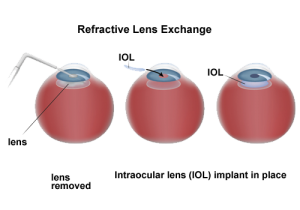
Refractive lens exchange, or RLE, is a vision correction procedure that addresses astigmatism, farsightedness, and nearsightedness. It’s typically performed on patients 45 and older who wish to achieve freedom from visual aids.
If you have severe nearsightedness or farsightedness and LASIK or PRK is not suitable for you, your ophthalmologist may recommend RLE as an alternative procedure. During refractive lens exchange, your surgeon will remove the natural lens and replace it with an intraocular lens (IOL).
The IOL takes the place of the natural lens and allows you to see clearly. There are many kinds of intraocular lenses available.
Your surgeon will recommend the best one based on your visual needs and lifestyle goals. Refractive lens exchange shares many similarities with cataract surgery.
The difference between the two is that when you have refractive lens exchange, you don’t need cataracts to remove your natural lens. Also, the main reason for performing the procedure is to eliminate the need for glasses or contact lenses.
Once you have refractive lens exchange, you’ll never have to worry about developing cataracts when you get older. Cataracts are unable to develop on an intraocular lens.
Refractive lens exchange has helped millions of patients attain 20/20 vision or better, with 98 to 99 percent success rates.
Who is a Good Refractive Lens Exchange Candidate?
You may be eligible for RLE if you:
- Are 45 or older
- Have a high refractive error

Say Goodbye to Glasses and Contact Lenses for Good
Eye Physicians of Long Beach is proud to offer an extensive range of laser vision correction procedures that you can tailor to your unique needs. If you’re tired of prescription lenses, you can look forward to enjoying your best eyesight ever without glasses or contacts after a vision correction procedure.
Find out which vision correction procedure is right for you by scheduling a consultation at Eye Physicians of Long Beach in Long Beach, CA, today!
